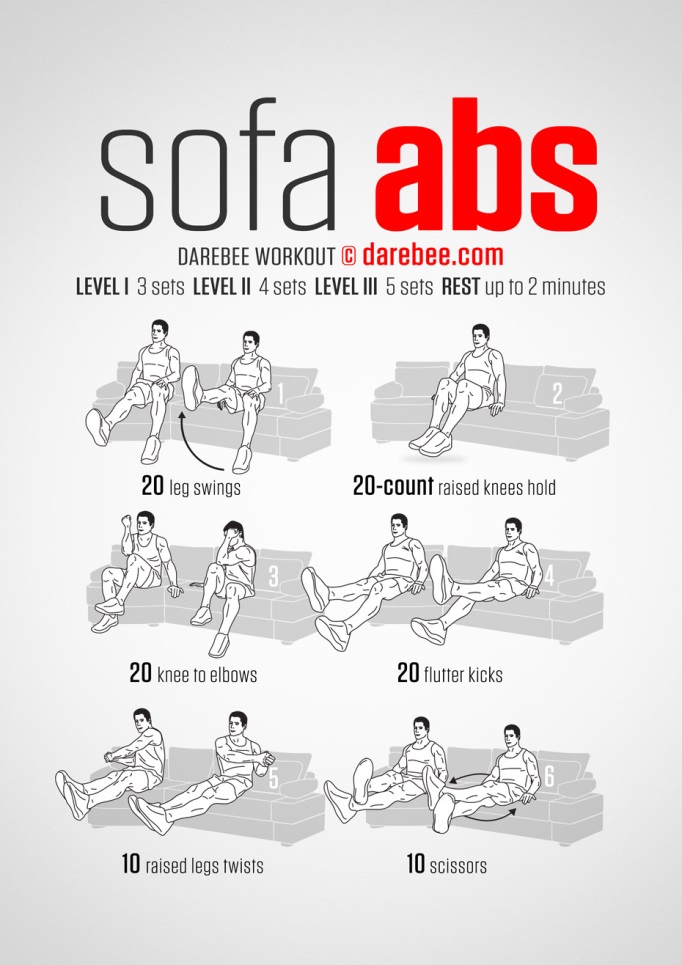Exercising in the winter can be hard! It’s cold, sometimes there is snow on the ground you could slip on, it gets dark early, feeling down in the winter is more common. The obstacles are many. However, just a little bit of exercise each day can be beneficial. The American Heart Association recommends about 20 minutes per day of moderate aerobic exercise, and combatting that seasonal depression with exercise can be done indoors. Bodyweight exercises do not require any special equipment, and can even be done on your couch while watching that new Netflix release! For added social benefit, invite a friend over for a new episode, find a set of exercises like these on darebee.com (it’s free and has a lot of options!), and get to exercising in your living room! It is important to remember to stay hydrated and to slowly scale up the intensity of your workouts. If you are not used to regular exercise, start slow and build your strength and abilities.

- Level 1 is 3 sets.
- Level 2 is 4 sets.
- Level 3 is 5 sets.
- Rest up to 2 minutes.
Exercises
- 20 leg swings: a drawing of a person seated on a couch with one leg bent and foot on the floor, the other extended off the floor being raised from below the hips to about level with the figures hips
- 20-count raised knees hold: a figure seated on a couch with both knees bent and held off the floor
- 20 knees to elbows: figure seated on the couch with one foot resting on the floor, while the other is bent and raised above the figures hips. The opposite are bent at the elbow is crossing to touch the raised knee
- 20 flutter kicks: the seated figure has both legs straight and raised off the floor, one level with their hips, and the other slightly lowered but not touching the ground, switching the higher and lower legs without resting on the ground
- 10 raised leg twists: the figure is seated with both legs raised off the floor and extended straight, while their clasped hands are moved from one side of their body to the other- twisting at the waist
- 10 scissors: the figure is seated with both legs raised and extended straight, though crossed with one on top. The second figure shows the other leg on top, with arrows indicating moving the legs to alternate which is on top, all while in the air about hip level

